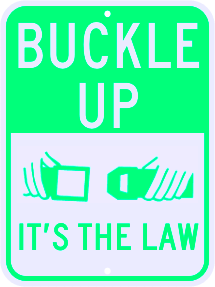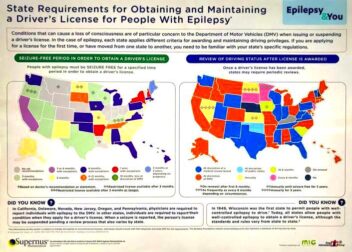Buckle Up It’s the Law and Why Seatbelt Compliance Matters
Seatbelt laws are designed to keep everyone safe on the road. These laws vary by state, but they generally require all passengers to wear seatbelts while a vehicle is in motion. In many places, the driver can be fined if passengers in the car are not buckled up. This means that it’s not just a personal choice; it’s a legal requirement.
Here are some key points to understand about seatbelt laws:
- Primary Enforcement: In some states, police can stop a driver solely for not wearing a seatbelt.
- Secondary Enforcement: Other states only allow fines for seatbelt violations if the driver is pulled over for another reason.
- Age and Position Requirements: Laws often specify that children must be in car seats or booster seats until they reach a certain age or height.
Knowing your state’s specific laws can help you avoid fines and, more importantly, can save lives.
Importance of Wearing Seatbelts
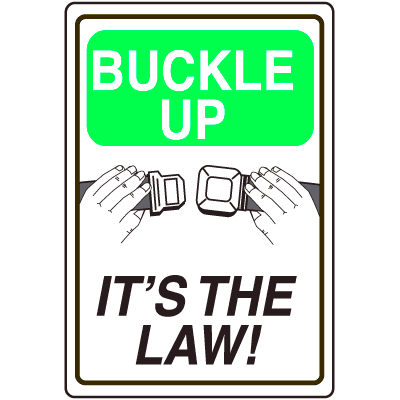
Wearing a seatbelt is one of the simplest yet most effective ways to protect yourself in a vehicle. It keeps you secure in your seat during sudden stops or crashes, reducing the risk of severe injury or death. According to studies, seatbelt use can decrease the risk of death for front-seat passengers by about 45%.
Some reasons why wearing seatbelts is crucial include:
- Injury Prevention: Seatbelts prevent you from being thrown around the car or ejected during a crash.
- Legal Compliance: Following the law can help you avoid fines and other penalties.
- Setting an Example: Wearing a seatbelt encourages others in the car to do the same, especially children.
In short, buckling up is an essential habit for everyone on the road.
Consequences of Not Wearing Seatbelts
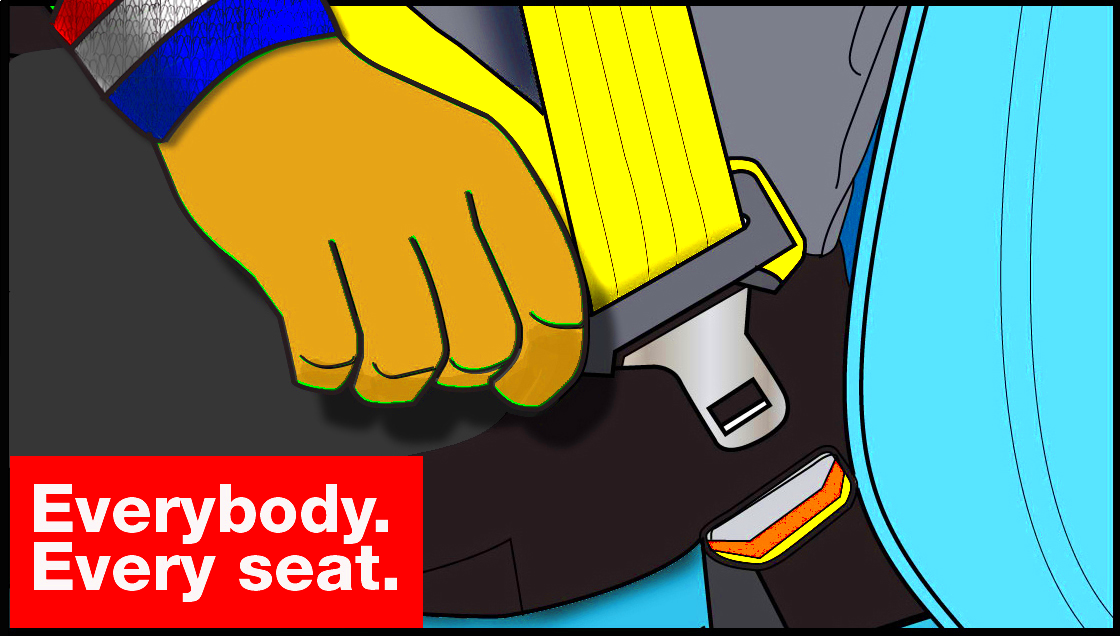
The consequences of not wearing a seatbelt can be severe, both legally and physically. Failing to buckle up puts you at greater risk during accidents and can lead to hefty fines depending on where you live.
Here are some potential consequences:
- Legal Penalties: Many states impose fines ranging from $20 to $200 for seatbelt violations.
- Increased Risk of Injury: Unrestrained passengers are more likely to suffer serious injuries, including head trauma, spinal cord injuries, and internal injuries.
- Higher Insurance Costs: Not wearing a seatbelt may lead to higher premiums due to increased risk factors.
It’s essential to remember that seatbelts are designed to save lives. Ignoring this simple safety measure can have dire consequences.
How Seatbelts Save Lives
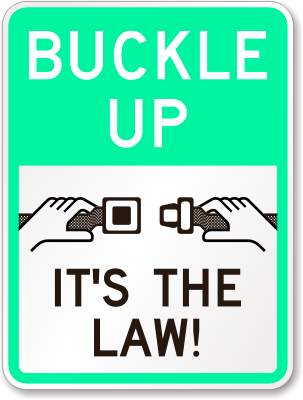
Seatbelts are more than just a safety accessory; they are a crucial component of vehicle safety that can significantly reduce injuries and fatalities in crashes. When you buckle up, you secure yourself in your seat, which can make all the difference in the event of an accident. Studies show that seatbelts reduce the risk of fatal injury by approximately 45% for front-seat occupants.
Here are some ways that seatbelts save lives:
- Prevents Ejection: In high-speed crashes, unbuckled passengers can be thrown from the vehicle, dramatically increasing the risk of serious injury or death. Seatbelts keep you safely inside.
- Reduces Movement: Seatbelts limit your movement during a collision, preventing you from hitting the dashboard, steering wheel, or side windows.
- Spreads Force: In the event of a crash, seatbelts distribute the force of the impact across stronger parts of your body, like your chest and pelvis, which can help minimize injury.
Wearing a seatbelt is a simple yet powerful way to protect yourself. Remember, every trip—whether long or short—presents a risk, so always buckle up!
Common Myths About Seatbelt Use
Despite the overwhelming evidence supporting seatbelt use, there are still many myths that can lead people to believe they don’t need to buckle up. Let’s address some of these misconceptions:
- Myth 1: I’m a Good Driver, So I Don’t Need a Seatbelt: Even the safest drivers can be involved in accidents caused by others. Wearing a seatbelt is always a good practice.
- Myth 2: Seatbelts Are Only Necessary for Long Trips: Most accidents happen within 25 miles of home, so buckling up for short trips is just as important.
- Myth 3: It’s Safer to Be Thrown from the Vehicle: This is one of the most dangerous beliefs. Ejection increases the likelihood of fatal injury.
Don’t let myths keep you from being safe. Educate yourself and those around you about the true benefits of wearing a seatbelt.
Seatbelt Laws Across Different States
Seatbelt laws can vary significantly from one state to another. Understanding these laws is crucial for compliance and safety. Most states require drivers and front-seat passengers to wear seatbelts, but regulations can differ regarding back-seat passengers and children.
| State | Seatbelt Requirement | Fine for Violation |
|---|---|---|
| California | All passengers must wear seatbelts | $20 – $200 |
| Florida | Only front-seat passengers required | $30 |
| New York | All passengers must wear seatbelts | $50 |
| Texas | Front-seat passengers required; back-seat optional | $25 – $200 |
It’s essential to familiarize yourself with the specific seatbelt laws in your state and any state you plan to visit. Compliance not only helps you avoid fines but also ensures your safety and the safety of your passengers. Always buckle up, no matter where you are!
How to Ensure Proper Seatbelt Use
Using a seatbelt is only effective if it’s done correctly. Many people may think that simply buckling up is enough, but proper seatbelt use involves a few key steps to maximize safety. Let’s take a closer look at how to make sure you’re using your seatbelt correctly every time you get into a vehicle.
Here are some tips to ensure proper seatbelt use:
- Adjust the Seat: Before buckling up, adjust your seat to ensure you are comfortable and in a position that allows the seatbelt to fit properly.
- Wear It Low and Tight: The lap belt should lie low across your hips, and the shoulder belt should cross your chest and shoulder. It should be snug but not too tight.
- Check for Twists: Make sure the seatbelt is not twisted. A twisted seatbelt can reduce its effectiveness during a crash.
- Use Booster Seats for Children: Children who have outgrown their car seats should use booster seats until they can properly fit in the vehicle’s seatbelt.
- Always Buckle Up: Make it a habit for all passengers in the car to buckle up, no matter how short the trip.
By following these tips, you can help ensure that you and your passengers are as safe as possible while on the road.
FAQ
Let’s tackle some frequently asked questions about seatbelt use and laws to clarify any confusion you might have:
- Q: Are seatbelts required for all passengers?
A: Yes, in most states, all passengers must wear seatbelts. Some states have specific regulations regarding age and seating position. - Q: Can I be fined for not wearing a seatbelt?
A: Yes, fines vary by state and can be issued if you or your passengers are not wearing seatbelts. - Q: Do seatbelts protect you in every crash?
A: While seatbelts significantly reduce the risk of injury, they are most effective when combined with other safety features like airbags. - Q: Is it safe for pregnant women to wear seatbelts?
A: Yes, pregnant women should wear seatbelts. The lap belt should go under the belly, while the shoulder belt should go between the breasts and off to the side of the belly.
Conclusion
Wearing a seatbelt is one of the simplest and most effective ways to protect yourself while driving or riding in a vehicle. Understanding the laws, using your seatbelt properly, and debunking common myths can help create a safer environment for everyone on the road. Remember, accidents can happen anytime, and being buckled up can be the difference between life and death.
So, the next time you get into a car, take a moment to ensure that everyone is properly buckled up. Your safety and the safety of those around you is worth it!
